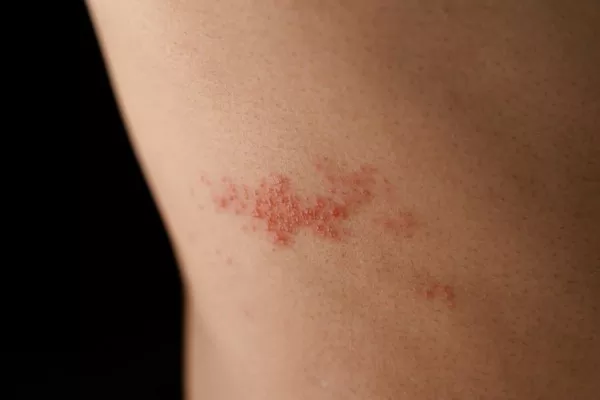Vitiligo is a chronic autoimmune condition characterized by the loss of skin pigmentation. This occurs when the melanocytes, the cells responsible for producing melanin, the pigment that gives skin its color, are destroyed. The result is the appearance of white patches on the skin, which can vary in size and location. Although vitiligo can affect people of any age, gender, or ethnic group, it often begins before the age of 30 and is more noticeable in individuals with darker skin tones due to the contrast between the affected and unaffected areas.
Causes and Pathogenesis
The exact cause of vitiligo remains unknown, but it is widely believed to be an autoimmune condition. In autoimmune diseases, the immune system mistakenly attacks the body’s own cells and tissues. In the case of vitiligo, the immune system targets and destroys melanocytes. Several factors are thought to contribute to the development of vitiligo, including genetic predisposition, environmental triggers, and oxidative stress.
1. Genetic Factors: Studies have shown that vitiligo can run in families, suggesting a genetic component to the disease. Certain genes associated with immune function and pigmentation have been identified in people with vitiligo, indicating a complex genetic interplay.
2. Environmental Triggers: Environmental factors such as exposure to certain chemicals, skin trauma, and sunburn have been implicated in the onset of vitiligo. These factors may trigger an immune response that leads to the destruction of melanocytes.
3. Oxidative Stress: Oxidative stress, a condition characterized by an imbalance between free radicals and antioxidants in the body, has also been linked to vitiligo. Free radicals can damage cells, including melanocytes, and contribute to the progression of the disease.
Symptoms and Diagnosis
The primary symptom of vitiligo is the appearance of white or depigmented patches on the skin. These patches can occur anywhere on the body but are most commonly found on the face, hands, arms, feet, and genitals. The extent and rate of color loss can vary significantly among individuals. Some people may experience rapid depigmentation, while others may have stable patches for years.
In addition to skin depigmentation, vitiligo can also affect the hair, causing white or gray patches on the scalp, eyebrows, eyelashes, and beard. In rare cases, the condition can impact the mucous membranes, such as the inside of the mouth and nose, and the retina of the eye.
Diagnosis of vitiligo is primarily clinical, based on the characteristic appearance of the white patches. A dermatologist may use a special device called a Wood’s lamp, which emits ultraviolet light, to examine the skin and confirm the diagnosis. In some cases, a skin biopsy or blood tests may be performed to rule out other conditions and assess for autoimmune markers.
Types of Vitiligo
Vitiligo is classified into several types based on the distribution and extent of the depigmented patches:
1. Generalized Vitiligo: This is the most common type, characterized by widespread patches of depigmentation on various parts of the body. It often follows a symmetrical pattern.
2. Segmental Vitiligo: This type is less common and tends to affect only one side or segment of the body. It usually begins at a younger age and progresses for a few years before stabilizing.
3. Focal Vitiligo: Focal vitiligo involves one or a few scattered patches in a localized area. It does not follow a symmetrical pattern.
4. Acrofacial Vitiligo: This type primarily affects the face and extremities, such as the hands and feet.
5. Universal Vitiligo: This is a rare form of vitiligo where more than 80% of the body’s skin is affected by depigmentation.
Impact on Quality of Life
Vitiligo is not a life-threatening condition, but it can have a significant impact on a person’s quality of life. The visible nature of the disease can lead to emotional and psychological distress, affecting self-esteem, body image, and social interactions. Many individuals with vitiligo report feelings of embarrassment, anxiety, and depression.
The psychosocial impact of vitiligo can vary depending on cultural and societal attitudes toward appearance and skin color. In some cultures, there may be a lack of awareness and understanding of the condition, leading to stigma and discrimination. Support groups and counseling can be valuable resources for individuals coping with the emotional challenges of vitiligo.
SEE ALSO: What is Vitiligo Surgery?
Treatment Options
While there is no cure for vitiligo, various treatment options are available to manage the condition and improve the appearance of the skin. The choice of treatment depends on factors such as the extent and location of the depigmented patches, the patient’s age, and their response to previous treatments. Common treatment modalities include:
1. Topical Corticosteroids: These anti-inflammatory medications can help to restore skin color in localized areas by suppressing the immune response. They are typically applied directly to the affected skin.
2. Topical Calcineurin Inhibitors: These immunomodulating agents, such as tacrolimus and pimecrolimus, are used as an alternative to corticosteroids, especially for sensitive areas like the face and genitals.
3. Phototherapy: Narrowband ultraviolet B (NB-UVB) phototherapy is a widely used treatment that involves exposing the skin to specific wavelengths of ultraviolet light. It can help to stimulate repigmentation and is often combined with other therapies.
4. Excimer Laser: This targeted form of phototherapy delivers concentrated UVB light to specific areas of depigmentation, promoting repigmentation in localized patches.
5. Depigmentation: For individuals with extensive vitiligo who do not respond to other treatments, depigmentation therapy may be an option. This involves using medications such as monobenzone to lighten the remaining pigmented skin, creating a more uniform appearance.
6. Surgical Interventions: In cases where other treatments are ineffective, surgical options such as skin grafting, blister grafting, and melanocyte transplantation can be considered. These procedures aim to transfer healthy melanocytes to depigmented areas.
7. Camouflage Cosmetics: Cosmetic products such as concealers and self-tanning lotions can be used to mask the appearance of white patches and improve the skin’s overall appearance.
Emerging Treatments and Research
Research into vitiligo continues to evolve, with a focus on understanding the underlying mechanisms of the disease and developing new therapeutic approaches. Some emerging treatments and areas of research include:
1. JAK Inhibitors: Janus kinase (JAK) inhibitors, such as tofacitinib and ruxolitinib, are being investigated for their potential to modulate the immune response and promote repigmentation in vitiligo patients.
2. Stem Cell Therapy: Research into stem cell-based therapies aims to regenerate melanocytes and restore pigmentation in affected areas. This approach holds promise for future treatment options.
3. Gene Therapy: Advances in gene editing technologies, such as CRISPR-Cas9, offer potential avenues for correcting genetic defects associated with vitiligo and preventing melanocyte destruction.
4. Microbiome Research: The role of the skin microbiome in vitiligo is an emerging area of interest. Studies are exploring how alterations in the skin’s microbial community may contribute to the development and progression of the disease.
Conclusion
Vitiligo is a complex autoimmune disease with a multifactorial etiology involving genetic, environmental, and immune-related factors. While it poses significant challenges to those affected, ongoing research and advances in treatment options offer hope for improved management and quality of life. Understanding the condition, raising awareness, and providing support are essential steps in addressing the physical and emotional impact of vitiligo on individuals and their communities.
Related Topics:























